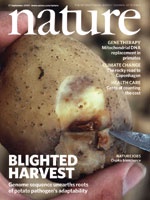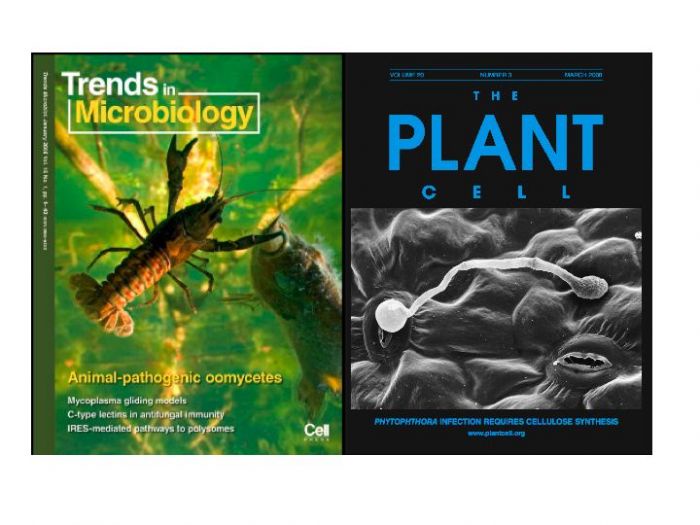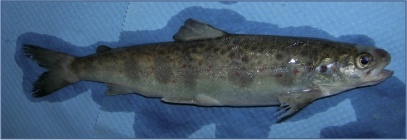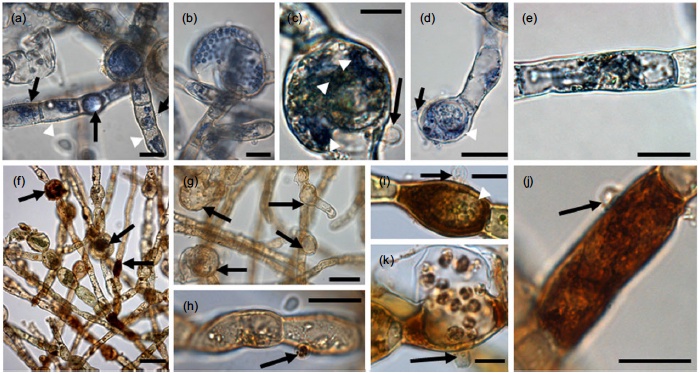
MSc (Wageningen, The Netherlands, 1993) PhD (Wageningen, The Netherlands, 2000)
Chair in Mycology
- About
-
- Email Address
- p.vanwest@abdn.ac.uk
- Telephone Number
- +44 (0)1224 437327
- Office Address
Office 2:33, Lab 2:39
Aberdeen Oomycete Laboratory
College of Life Sciences and Medicine
Institute of Medical Sciences
Foresterhill
Aberdeen
AB25 2ZD- School/Department
- School of Medicine, Medical Sciences and Nutrition
Biography
Prof. Dr. Ir. Pieter van West is a past Royal Society University Research Fellow. He is Director of the International Centre for Aquaculture Research and Development (ICARD) at the University of Aberdeen, Board member of the Sustainable Aquaculture Innovation Centre (SAIC), Fellow of the Royal Society of Edinburgh and he was President of the British Mycological Society 2017-2018) .
His current research programme focuses on oomycete biology. Several economically and environmentally important oomycetes, or watermoulds, are studied at most disciplinary levels (taxonomy, ecology, epidemiology, biochemistry and cellular and molecular biology and especially host-microbe interactions). He is particularly interested in developing novel methods to control oomycete pathogens.
The animal pathogenic oomycetes under investigation are Saprolegnia parasitica, Saprolegnia australis, Saprolegnia diclina, Aphanomyces spp. and Halioticida spp.
The plant pathogenic species include mainly Phytophthora infestans and several Pythium spp. and the algal pathogenic species include Eurychasma dicksonii, Olpidiopsis spp., Anisolpidium spp. and Maulinia spp.
Memberships and Affiliations
- Internal Memberships
-
Director of the International Centre for Aquaculture Research and Development (ICARD)
- External Memberships
-
Fellow of the Royal Society of Edinburgh
Board member of the Sustainable Aquaculture Innovation Centre (SAIC)
Past President of the British Mycological Society
Editorial Board member of Fungal Biology
Editorial Board member of Fungal Biology Reviews
- Research
-
Research Overview
Fundamental molecular processes in Oomycete pathogens
The group of oomycete pathogens cause destructive diseases of thousands of (commercially important) plant species and fish. These so-called watermoulds have many fungus-like characteristics, but are not true-fungi. In fact, they are closely related to kelp and diatoms.
One particular oomycete, Phytophthora infestans, the causal agent of potato late blight, generates global yield losses estimated to exceed over £3 billion annually, making it one of the most important biotic constraints to global food production. It is probably the most destructive plant pathogen in human history, as it caused tremendous human suffering in the mid 1840's due to failed potato crops in Ireland and the UK.
One of the most destructive oomycete pathogens on fish is Saprolegnia parasitica. It is endemic to all fresh water habitats around the world and is partly responsible for the decline of natural populations of salmonids and other fresh water fish. Today, losses in the salmon aquaculture business in Scotland alone are estimated at several millions of pounds annually.

Despite their economic importance, little is known about the molecular mechanisms accounting for the success of Oomycetes as plant or fish pathogens, or the fundamental molecular processes underlying their development. My research program aspires to identify molecular characteristics that are essential for the development and pathogenesis of Phytophthora, Pythium and Saprolegnia species.
Work mainly focuses on the isolation and functional characterisation of genes encoding recognition molecules and stage-specific proteins to enable
- understanding and unravelling fundamental molecular processes in Oomycetes
- the detection of molecular targets for novel control strategies, possibly directed against a variety of Oomycete pathogens.

Current Research
1 Identification and functional characterisation of zoospore specific proteins from oomycetes via genomic, transcriptomic and proteomics approaches (Figure 1).

Figure 1. Zoospores are released from a sporangium of Saprolegnia parasitica (taken from van West, 2006)
2 Identification and functional characterisation of proteins from Saprolegnia parastica, a fish pathogen of salmonids and other fresh water fish (Figure 2), that are essential for development and pathogenicity.

Figure 2. Saprolegnia infection on pre-smolt salmon.
3 Investigating the mechanism of Phytophthora and Saprolegnia protein translocation into the host cells (Figure 3).

Figure 3 Oomycete effector translocation (Image taken from Wawra et al., 2012 Current Opinion in Microbiology doi:10.1016/j.mib.2012.10.008).
4 Research into oomycete-insect interactions

Figure 4 Saprolegnia infections of waterborne insects (Image taken from Sarowar et al. 2013 Fungal Biology 117: 752-763).
5 Research into oomycete-algae interactions.

Figure 5 Eurychasma infections in Ectocarpus (Image taken from Strittmatter et al., 2015, Plant Cell & Environment doi: 10.1111/pce.12533).
6 Discovering and describing novel oomycete species

Figure 6 Oospores of Pythium polare, a pathogen of moss from the arctic and antarctic regions (Image taken from Tojo et al. 2012, Fungal Biology doi:10.1016/j.funbio.2012.04.005).
- Teaching
-
Teaching Responsibilities
Eukaryotic Microbiology lectures in course BI25M5 (Microbes, Infection & Immunity)
Molecular Plant Pathology lectures in course AG3816 (Biology and Ecology of Plant Disease)
- Publications
-
Page 5 of 13 Results 41 to 50 of 129
Nonagonal cadherins: A new protein family found within the Stramenopiles
Gene, vol. 593, no. 1, pp. 64-75Contributions to Journals: Articles- [ONLINE] DOI: https://doi.org/10.1016/j.gene.2016.08.003
Arctic marine phytobenthos of northern Baffin Island
Journal of Phycology, vol. 52, no. 4, pp. 532-549Contributions to Journals: Articles- [ONLINE] DOI: https://doi.org/10.1111/jpy.12417
- [OPEN ACCESS] http://aura.abdn.ac.uk/bitstreams/ec86e375-a987-445a-a627-d6a581a3780c/download
Mobilization of Pollutant-Degrading Bacteria by Eukaryotic Zoospores
Environmental Science & Technology, vol. 50, no. 14, pp. 7633-7640Contributions to Journals: ArticlesA thicker chorion gives ova of Atlantic salmon (Salmo salar L.) the upper hand against Saprolegnia infections
Journal of Fish Diseases, vol. 39, no. 7, pp. 879-888Contributions to Journals: Articles- [ONLINE] DOI: https://doi.org/10.1111/jfd.12421
NmPin from the marine thaumarchaeote Nitrosopumilus maritimus is an active membrane associated prolyl isomerase.
BMC Biology, vol. 14, pp. 1-15Contributions to Journals: ArticlesNew records and reassessment of macroalgae and associated pathogens from the Falkland Islands, Patagonia and Tierra del Fuego
Botanica Marina, vol. 59, no. 2-3, pp. 105-121Contributions to Journals: Articles- [ONLINE] DOI: https://doi.org/10.1515/bot-2015-0071
Saprolegnia diclina IIIA and S. parasitica employ different infection strategies when colonizing eggs of Atlantic salmon, Salmo salar L.
Journal of Fish Diseases, vol. 39, no. 3, pp. 343-352Contributions to Journals: Articles- [ONLINE] DOI: https://doi.org/10.1111/jfd.12368
- [OPEN ACCESS] http://aura.abdn.ac.uk/bitstreams/8cc95229-bcd4-40d6-b1d8-8f70ec65e1ef/download
Export of malaria proteins requires co-translational processing of the PEXEL motif independent of phosphatidylinositol-3-phosphate binding
Nature Communications, vol. 7, pp. 1-14Contributions to Journals: ArticlesInfection of the brown alga Ectocarpus siliculosus by the oomycete Eurychasma dicksonii induces oxidative stress and halogen metabolism
Plant, Cell & Environment, vol. 39, no. 2, pp. 259-271Contributions to Journals: Articles- [ONLINE] DOI: https://doi.org/10.1111/pce.12533
- [OPEN ACCESS] http://aura.abdn.ac.uk/bitstreams/ad0f720d-a0e8-4724-99d6-9bf42c3be439/download
Chaxapeptin, a Lasso Peptide from Extremotolerant Streptomyces leeuwenhoekii Strain C58 from the Hyperarid Atacama Desert
Journal of Organic Chemistry, vol. 80, no. 20, pp. 10252-10260Contributions to Journals: Articles- [ONLINE] DOI: https://doi.org/10.1021/acs.joc.5b01878
